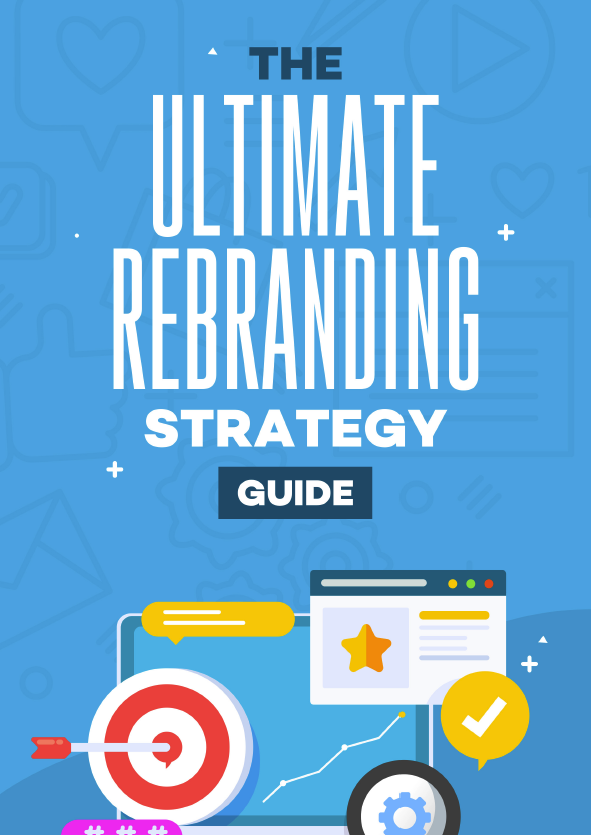Guest post by: Jason Hamilton
For many authors, marketing an eBook can be a long and tedious process. You want strategies that will give you a solid return on investment.
But what are the best marketing strategies?
To answer that, I made a list of the 22 best strategies (that I know of) for how to market an eBook. At the end, I also give you my recommendations for the top three, if all 22 of these are overwhelming.
Let’s dive right in.
1. Start With an Email List
I’ve added this one first for a reason. One of the best ways to market your book is to have an email list and engage with email subscribers frequently.
While growing an email list can be challenging when you are just starting out, the concept is still relatively simple.
Start by creating a reader magnet (which I’ll cover later on this list) and working with other authors to get “newsletter swaps,” in which they share your reader magnet with their readers in exchange for you sharing one of their books.
If you don’t have a huge following, you might find that some readers are reluctant to do a newsletter swap. But I have found that if you have a reader magnet with a quality cover, most are willing to share.
2. Know Your Target Audience
Understanding your target audience is a key component if you want solid eBook sales (not to mention any type of content marketing or digital marketing).
For readers, it’s important to know what type of genres are best for the reader. Where do those readers hang out?
Search the genres on Amazon, look at Facebook groups, TikTok communities, and more to find your ideal reader.
And don’t make the mistake of picking a broad audience. Ideally, you should have it narrowed down to one or two specific types of people. Give them names, identities, and histories, and then you can really pinpoint your perfect customer.
3. Query a Book Publishing Company
While most of the items on this list are for self-published authors, it’s worth noting that getting your book published traditionally is a great way to gain publicity.
And it doesn’t have to be one of the big five publishers either. You can easily find a mid-list publisher that might be willing to give your book a chance (though you should stay away from vanity presses).
See this list of book publishing companies to get started.
Even if you plan to self-publish most of your work, having a book published by a reputable publisher is a great way to increase your notoriety and get your name out there.
4. Get a Good-Looking Book Cover
Your book cover is perhaps the single most important piece of marketing material that you’ll have.
If your book cover doesn’t look professional or match the genre of your book, you will not make a profit on your book.
Let me repeat that: A bad book cover = 0 sales.
To get your book cover right, study the genre that your book fits in, and look at what other authors are doing with their book covers. Understand that while you want your book cover to be eye-catching, you don’t want it to be so unique that it doesn’t match other books in the genre.
Figure out the “tropes” of a book cover, and be sure to include those.
5. Start a Blog
Blogging can be a worthwhile endeavor to get organic readers to discover your book. If you can use SEO to attract people through Google to articles that you have written, you can then sell them on your book in that article.
This is a particularly effective strategy for nonfiction authors, but with a little creativity, fiction authors can do this as well. The point is that you want to be blogging about topics that people are actually searching for on Google.
For example, I am an author of mythology-related fiction, so I built this website around mythology and Arthurian legend.
6. Choose the Right Keywords
Keywords are a vitally important piece of your eBook marketing that few people fully appreciate.
Keywords aid in discoverability. When someone types in a specific keyword into Amazon, they are looking for books that match the keyword. If your book can show up in the rankings, there is a decent chance that they will buy your book.
You want to pick keywords that are not too broad and competitive (i.e. ‘weight loss’ or ‘fantasy book’). You also don’t want to pick keywords that no one is searching for. There is a sweet spot for keywords that people are searching for with little competition. Using a program like Publisher Rocket is a great way to find those keywords.
7. Analyze the Competition
As you are planning your book, it can be useful to see the competition in the genre you have selected, or the search terms that you are hoping to target.
By using a tool like an Amazon Sales Rank Calculator, you can plug in your competitors and find out how much they are making from their books.
You can then do a search on Amazon for a specific keyword, look at how many copies the top people are selling and determine if that keyword is either too competitive (meaning you would have to sell hundreds of books to rank for the same keyword), or if no one is selling books with that keyword, (meaning you shouldn’t bother trying to rank for it).

8. Select all 10 Categories
When you upload a book to Amazon KDP (Kindle Direct Publishing), they include your book in 2-3 categories by default. But did you know that you can have up to 10 categories for each book?
By carefully researching the categories you want to be included in and then contacting Amazon with the categories that you want, you can easily get your book ranking in multiple categories.
What this does is expand the discoverability of your book.
Like keywords, you want to pick categories that are not too competitive, but are also categories with books that are selling. While it can be easy to rank number one in a category where no other books are selling well, low sales equals low discoverability, and it is likely that your book will not sell well either.
Find that sweet spot of noncompetitive categories that people still search for.
9. Pick a Social Media Platform and Go All In
Let’s face it: There are so many social media platforms out there today. It can be next to impossible to manage all of them. Plus, not all social media platforms are very effective.
Instead, I recommend picking one social media platform and really spending the time to master it.
Read books, take courses, and figure out exactly how you can make that social media platform work for you. It may take time, but by focusing all your social media energy on one platform, you are much more likely to make a difference than if you try to do all social media platforms at once.
10. Price Your Book Competitively
Pricing is one of those hotly debated topics in the indie publishing world.
Many will tell you that you should price your first book in a series for free or $0.99. Others will tell you that your work is worth more and that you should price it higher.
I recommend that you price your Kindle eBook similar to other successful authors in your genre. Once again, this will take study of your genre’s bestsellers, which you can never do enough of.
Once you have a sense of where people are pricing their books, try to do something similar. There’s no problem with dropping your price for the occasional sale and promotion, but that is a separate discussion.
11. Run Book Promotions
While some book promotion sites can be hit or miss, it is a great way to aid in discoverability for your book.
A book promotion lets you pay someone like BookBub in exchange for them sharing your book on their newsletter. Depending on the service, this can be quite effective. I have also found that, when paired with Amazon ads, this is a great way to trigger Amazon’s algorithm.
Additionally, spreading your book promotions out over time is one of the best ways to trigger the algorithm, as it shows that your book is receiving sustained sales.
12. Network with Other Authors
While not a direct book marketing technique, you will be surprised at the benefits that you receive by networking with other authors.
Networking helps you connect with the readers of other authors. It allows you to learn new things and brainstorm with other successful people, and it helps you build a community of like-minded people, especially if you network with other authors in your genre.
You can do this by going to conferences like 20BooksVegas or the London Book Fair, or taking part in writing groups.
13. Polish Your Hook and First Chapter
Your first chapter, especially your first few sentences, are the most important part of your book. This is the first thing that a reader will see, and often, they will use Amazon’s preview capability to read the first few pages before they buy.
If you don’t have a good hook or something that draws the reader in, it is unlikely that the reader will want to buy your book.
A good first chapter will also ensure that the reader continues on to chapter 2. Once you have got them that far, it is far easier to get them to finish the book.
14. Use Giveaways
Giveaways are attractive for a reason, and you can use that to your advantage.
You can choose to give away things like signed copies of your book, eBook copies of your book, swag, or whatever you want.
Use this to attract people onto your email list and to engage your current readers.
15. Build a YouTube Channel
Like a blog, a YouTube channel is a great way to gain organic discoverability.
This is especially true of nonfiction authors, but a YouTube channel can work for fiction as well.
Identify topics that your readers would be interested in, or needs that they want to solve, then create YouTube videos on those topics. The more you can establish yourself as an authority in that space, the more readers will trust you enough to buy your book.

16. Invest in Yourself
Once again, this is not a direct marketing strategy, but it will create some of your best results in the long term.
Invest in yourself.
By this, I mean take time to read books about writing and self-publishing, take courses, and improve yourself in other areas of your life.
I like the 3% rule, which is the idea that you should invest 3% of your income into improving your own life. Some will say this should be as high as 5% or 10%.
You will find that this type of investing really helps you earn money in the long run.
17. Write a Great Book Description
Next to your book cover, your book description is one of the first things that your readers will see. You want to make sure that it is good.
To do this, say it with me now: You need to study your genre. Read what other bestselling books have in their description and try to emulate something similar.
Remember, this is not a summary of your book. It is a piece of copywriting designed to sell books.
18. Experiment with Ads
I don’t always recommend ads out of the gate, especially for newer writers, but there is no doubt that ads can be effective in selling books.
To create profitable ads (such as a Facebook ad or Amazon ad), you first want a lot of books, so you can afford to spend a little more.
Next, I recommend you experiment. This is the number one rule of ads. Swap out different images, use different text, and then record your results to see which words or styles are the most effective in attracting the right readers.
This takes time, but eventually, you will have advertisements that are laser-targeted at your readers and do a great job of selling your book.
19. Write a Reader Magnet
A reader magnet is a free book or offering that you give to potential readers in exchange for their email address.
This is still, by far, the most effective way to get people on your email list.
And the more valuable the offering, the more likely readers will want to share their email address.
20. Format a Beautiful Book
When a potential reader previews your book, you want to make sure it looks professional. You can do this with a quality formatting software like Atticus.
Formatting isn’t necessarily something that most readers think about. However, if you have a poorly formatted novel, readers will definitely notice. It will pull them out of the story and make them more likely to not buy your book or leave you a negative review.
21. Reach out to Libraries and Local Bookstores
A great way to get your books into the hands of readers is to contact your local libraries and bookstores so that they can pick up a copy of your book.
While not necessarily effective on a grand scale, it is a great way to support your library and your local bookstores, as well as build goodwill within specific communities.
22. Write an Awesome Book
Finally, the most important way to sell books is to… write a good book.
This may seem obvious, but many people rely so heavily on marketing strategies to sell their books that they forget to put in the effort to write a good book.
Make sure you invest in editors, proofreaders, and more to make your book shine.
I will add a warning to this one, though. Spending too much time trying to polish your book may hold you back. Remember that the best way to improve as a writer is to write. Don’t get so hung up on making sure every tiny detail is perfect that you put off writing the next book.
The same goes for all the marketing tactics on this list.
Final Thoughts
It may seem a little overwhelming to consider all of these options. How could you possibly do everything and
still have time in your day for anything else?
So here are my top three recommendations for how to market an eBook. If you can do nothing else, stick with these three first, then worry about adding on some of the others later. My recommendations are:
- Write a good book
- Get an email list
- Invest in a quality book cover
If you can hit these three marketing tactics on the head, you are setting yourself up for success.
Remember that making a living as an author is a long game. Most full-time authors have multiple books out before they make a decent living.
And so my last piece of advice is to keep writing. Never stop. The more you write, the better you will become, and the more books you have will thereby increase your chances of success.
I wish you the best of luck.
Author Bio:
Jason is the Content Manager for Kindlepreneur and a mythological fantasy author. He loves mythology, history, and geek culture. When he’s not writing, his favorite hobbies include hiking, chilling with his wife, spouting nonsense words at his baby daughter, and developing his website, MythBank.

